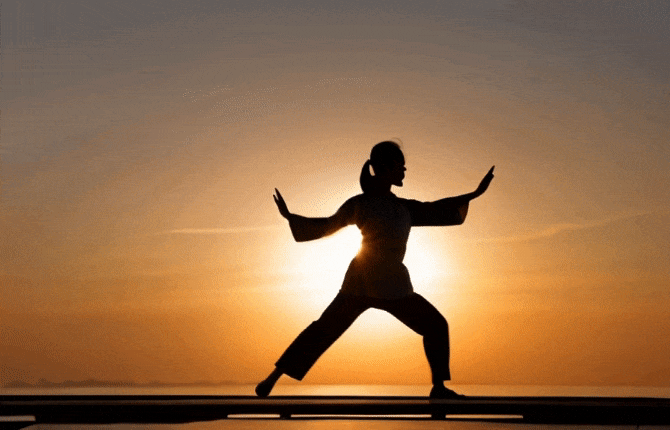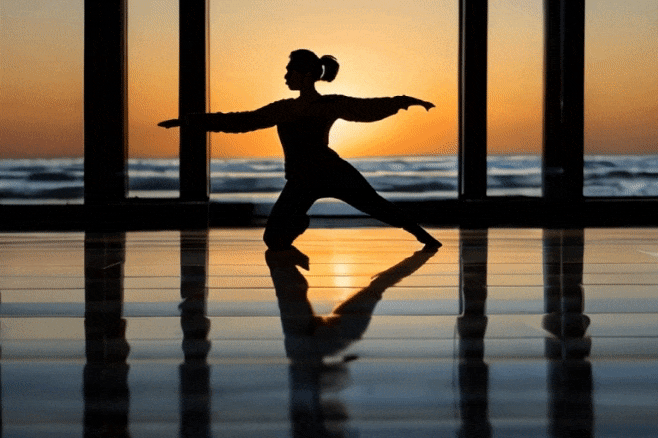Mindful Movements : Body-Mind connection for Optimal Wellness
In a world where peace often feels out of reach, finding moments of peace can feel like chasing a fleeting dream. But what if I told you that the key to unlocking inner calm lies in something as simple as the way we move ? That’s where mindful movements come in.
These practices offer more than just physical exercise – they’re a gateway to holistic well-being, connecting body and mind in a profound way.
Picture this : with each deliberate movement, you’re not just going through the motions; you’re cultivating a deeper sense of awareness and presence.
It’s about tuning into the subtle cues of your body, syncing movement with breath, and allowing yourself to be fully present in the moment.
But why is this so important ?
That is what you’re going to discover in this article.
So, if you’re ready to tap into the transformative power of these mindful activities, buckle up. We’re about to embark on a journey to discover how these simple practices can revolutionize your well-being.
Mindful Movements : Embrace Balance and Presence
Mindful movements encompass a variety of practices that encourage a heightened awareness of the body and mind.
These practices involve slow, deliberate movements coupled with focused attention on breath and bodily sensations. Examples include yoga, Tai Chi, Qigong, and mindful walking.
The essence of the mindful movement lies in its ability to foster present-moment awareness and promote a sense of connection between the body and mind.
The importance of mindful movements
In our busy lives, taking care of ourselves often takes a backseat. But what if I told you that just a few minutes of mindful movements each day could make a world of difference ?
It’s true. Incorporating mindful activities into your daily routine is like giving your body and mind a much-needed reset button.
First and foremost, mindful movements are essential for our physical health :
- They help improve flexibility, strength, and balance, making us less prone to injuries and chronic pain.
- A journal published by MDPI has shown that regular practice of mindful activities can even lower blood pressure and cholesterol levels, reducing the risk of heart disease and other illnesses.
But it’s not just our bodies that benefit from practicing mindful movement – our mental and emotional well-being get a boost too :
- These practices have been found to reduce stress levels by calming the nervous system and lowering cortisol levels according to a research published by New Zealand Journal of Physiotherapy.
- Additionally, they improve focus and concentration, helping us navigate life’s challenges with clarity and resilience.
Moreover, mindful movement practicing enhance self-awareness :
- By bringing attention to our breath and bodily sensations, we become more in tune with ourselves, leading to greater self-understanding and acceptance.
- This increased self-awareness can empower us to recognize and break free from harmful habits or patterns, fostering personal growth and fulfillment.
So, if you’ve been neglecting your well-being, now’s the time to start incorporating mindful movements into your daily routine. Your body, mind, and soul will will express gratitude.
Types of Mindful Movements
There are various forms of mindful movements, each offering unique benefits for the body and mind :
YOGA
Yoga combines physical postures, breathing exercises, and meditation to improve flexibility, strength, and mental clarity. It promotes relaxation and stress reduction while enhancing body awareness and mindfulness.

Tai Chi
Tai Chi is a gentle form of martial arts characterized by slow, flowing movements. It improves balance, coordination, and posture while calming the mind and reducing stress. Tai Chi is mindful movement that fosters a deep connection between movement and breath, promoting relaxation and inner peace.

Qigong
Qigong involves gentle movements, deep breathing, and meditation to cultivate energy and vitality. It enhances circulation, relieves tension, and promotes mental clarity and emotional well-being. Qigong is often practiced as a moving meditation, fostering a harmonious balance between body and mind.

Pilates
Pilates focuses on core strength, flexibility, and body awareness through controlled movements and breath. It improves posture, alignment, and muscular balance while reducing stress and tension. Pilates emphasizes mindful movement and precision, encouraging a holistic connection between body and mind.

Mindful Walking
Mindful walking involves walking slowly and intentionally, paying attention to each step and breath. It promotes relaxation, grounding, and mindfulness in motion. Mindful walking is one of the mindful activities that can be practiced outdoors in nature or indoors in a quiet space, providing an opportunity to connect with the present moment and nourish the body-mind connection.

Each mindful movement offers a unique pathway to holistic well-being, fostering a deeper connection between the body and mind while promoting physical, mental, and emotional health.
How to Incorporate Mindful Movements Into Your Routine
- Start Small : Begin by incorporating just a few minutes of mindful movement into your daily routine. It could be as simple as stretching in the morning or taking a short walk during your lunch break.
- Create a Dedicated Space : Designate a quiet, clutter-free area in your home where you can practice mindful movements without distractions. This could be a corner of your living room or a spare room if space allows.
- Set Realistic Goals : Be realistic about your time and energy levels. Set achievable goals for your mindful movement practice, whether it’s committing to a certain number of sessions per week or gradually increasing the duration of your practice over time.
- Choose Activities You Enjoy : Explore different types of mindful activities and find activities that resonate with you. Whether it’s yoga, tai chi, or simply mindful walking, choose practices that bring you joy and fulfillment.
- Be Consistent : Consistency is key to reaping the benefits of mindful movements. Try to incorporate your practice into your daily routine at the same time each day to build a habit and make it easier to stick to over the long term.
By following these simple tips, you can seamlessly integrate mindful activities into your everyday life, nurturing your body and mind for optimal well-being.
Final Thoughts on Mindful Movements
In the tapestry of our lives, mindful movements weave threads of peace and vitality. Beyond mere physical exercise, they offer a gateway to profound well-being, connecting body, mind, and spirit in harmony.
Research illuminates the myriad benefits of these practices. Studies show that engaging in mindful activities such as yoga, Tai Chi, and Qigong can reduce stress, enhance cognitive function, and even boost immune function.
These findings underscore the importance of incorporating these practices into our lives as tools for nurturing our holistic health.
But beyond the scientific evidence lies a deeper truth : in the practice of any mindful movement, we find a sanctuary—a refuge from the noise and chaos of the world. With each deliberate breath and intentional movement, we cultivate a sense of presence and awareness that permeates every aspect of our being.
In a culture that often prioritizes productivity over presence, the practice these movements offers a radical invitation : to slow down, to listen to the wisdom of our bodies, and to honor the sacredness of each moment.
It is a reminder that true well-being is not found in the pursuit of external achievements, but in the cultivation of inner peace and alignment.
So, let us embrace the transformative power of mindful movements—not as another item on our to-do list, but as a sacred practice of self-care and self-discovery. In the rhythm of our breath and the flow of our movements, may we find solace, strength, and profound connection—to ourselves, to each other, and to the world around us.
























